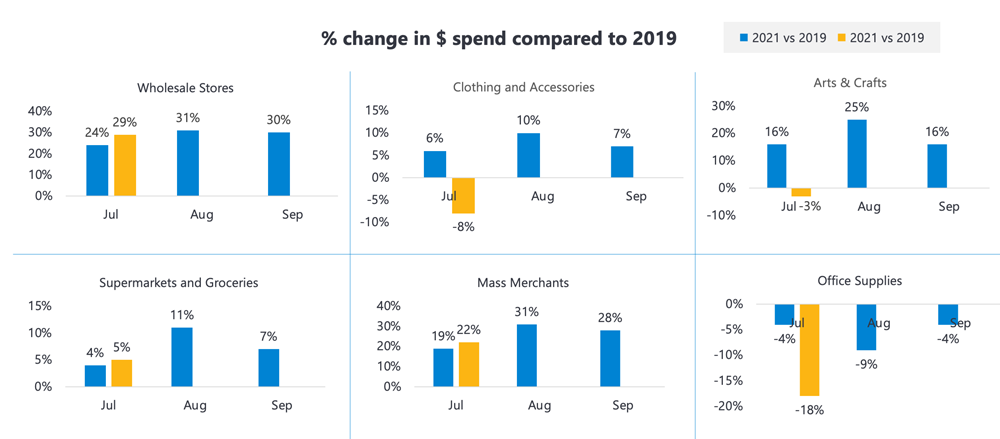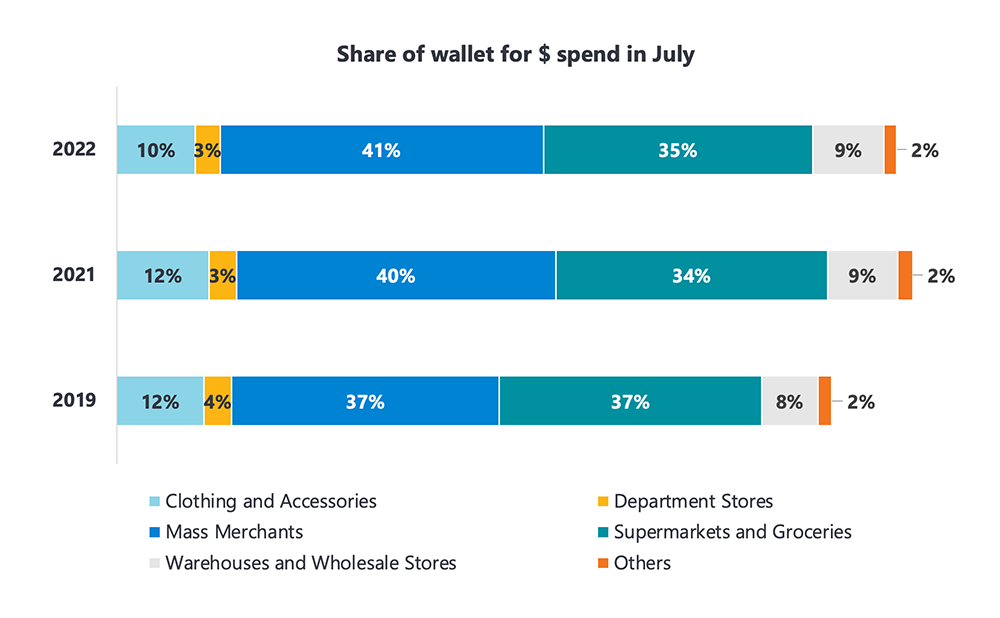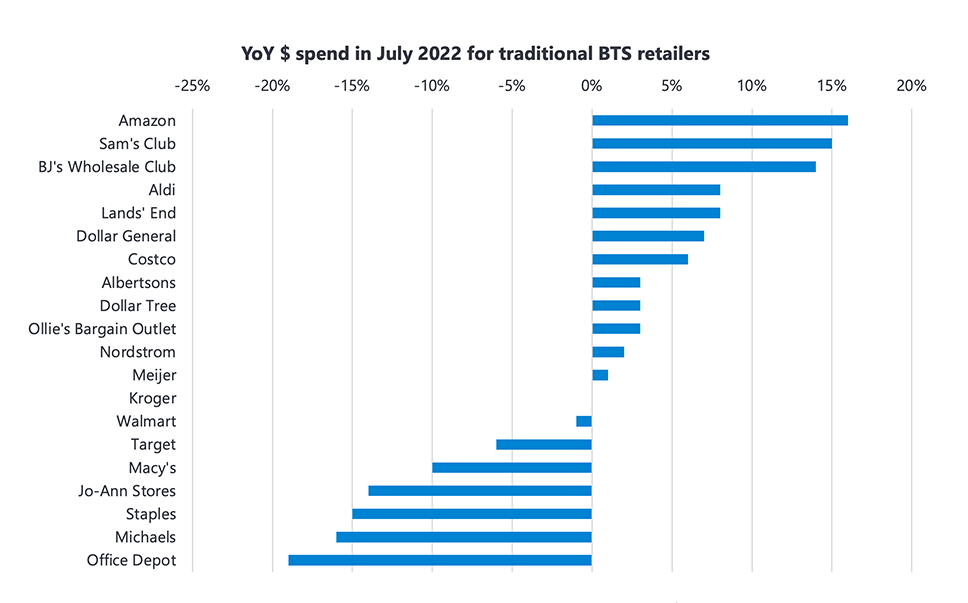
Source: https://www.yodlee.com/data-analytics/consumer-spending-insights-shifts-back-school-spending-2022
Some level of back-to-school spending is to be expected every year, but how much consumers are spending and what they choose to buy shifts given the economic conditions. Looking at de-identified Yodlee spend data, we’ve found some consumer back-to-school spending trends that may help retailers and manufacturers uncover new opportunities.

The growth in early back-to-school shopping this year, specifically within apparel, office supplies, and arts/hobby channels, is slower than 2021 when compared with pre-pandemic year 2019.
Last year the clothing industry saw a sizeable uptick as schools and offices reopened after a year or more of closure. In contrast, 2022 data suggests consumers this year are focusing on the essentials, with only supermarkets, mass merchants, and wholesale stores witnessing similar growth in 2022 as in 2021 vs 2019.
Apparel’s share of wallet dropped by 2% in July 2022 vs 2021

Consumer spending further supports this shift as apparel’s share of wallet dropped a significant 2% in July, compared with the last two years, while other spending categories held steadier.
Inflation seems to be driving bulk purchases and essentials
In 2021, consumers spent more than in 2019 virtually across the board:
Moving into 2022, compared to 2021, behavior looks quite different. Consumers spent:
This suggests that inflationary pressure is affecting how consumers make buying decisions. They are examining their budgets and turning to bulk buying for the lowest cost per item. It is important to note that we compare 2021 against 2019 because 2020 is considered to be an exceptional year, out of the normal range of consumer behavior.
Consumers love Amazon and wholesale for back-to-school

Amazon, Sam’s Club, and BJ’s Wholesale Club were clearly the most popular of the traditional back-to-school (BTS) retailers, further supporting this continued shift to bulk buying. We define the back-to-school shopper as consumers who made a purchase with any of these retailers during July 2019—Sep 2019 and also have at least one child at home (as they received child tax credit in July 2021).

Comparing 2021 purchases to 2022 purchases, Walmart shoppers were the most likely to repeat their retailer preference during this year’s back-to-school shopping season.

Shoppers who received a child tax credit in July 2021 focused their July 2022 shopping on bulk purchases and food, spending less at department stores and retailers that primarily sell apparel, books, and/or arts and crafts. While this could be partly because they spent so much on those items last year, the shift could also be one more example of consumers reacting to inflationary pressure.
Now that the back-to-school shopping season is almost over, retailers and brands will turn their eye to holiday consumer spending, which could also be affected by the same factors that influenced consumer spending this summer. An awareness of consumer spending habits empowers decision makers to uncover trends early, identify business drivers and blind spots and spot opportunities.
To learn more about the data behind this article and what Yodlee has to offer, please reach out to Dylan Curtis at Dylan.Curtis@yodlee.com.







Sign up to receive our stories in your inbox.
Data is changing the speed of business. Investors, Corporations, and Governments are buying new, differentiated data to gain visibility make better decisions. Don't fall behind. Let us help.













Sign up to receive our stories in your inbox.
Data is changing the speed of business. Investors, Corporations, and Governments are buying new, differentiated data to gain visibility make better decisions. Don't fall behind. Let us help.





